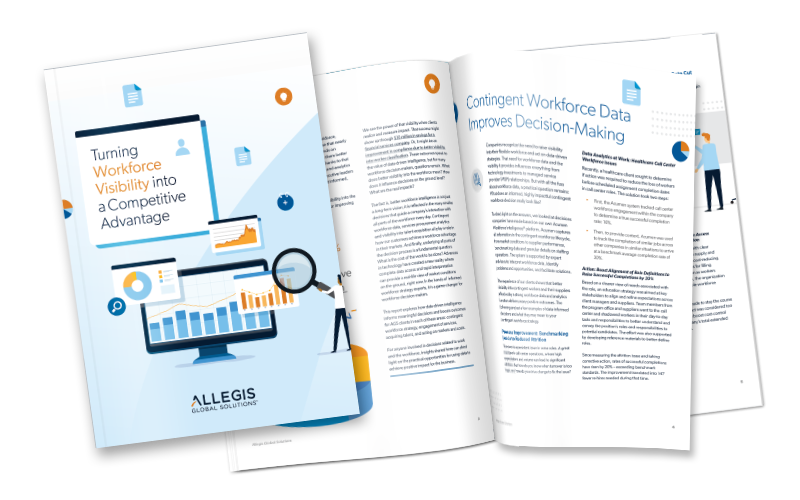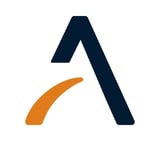The 4 Components of the Workforce Target Operating Model
When it comes to hiring, most companies specify what they are looking for in job descriptions and specifications, then attempt to match those qualifications against peoples’ experiences via resumes. However, that approach is becoming increasingly ineffective and dated as companies continue to face unprecedented challenges and opportunities in the era of digitalization, globalization and demographic shifts.
If you want to attract, retain and optimize the best talent to achieve your strategic goals and remain competitive in your industry, it might be time to flip the narrative. That’s where the Workforce Target Operating Model comes in. Instead of matching job specs to resumes, this model matches skills to tasks. Rather than choosing the sourcing channel (full-time employee, contractor, freelancer, vendor) first, this approach keeps all possible or hybrid options on the table.
And, instead of living in technological chaos with siloed tech that doesn’t talk to each other nor live up to their full promises, the Workforce Target Operating Model takes a platform approach to simplify your workforce technology ecosystem.
In our book, The Universal Workforce ModelTM, we proposed an outcome-based approach to harmonized workforce management with three core elements that form the foundation for future success:
- A task/skills-based approach to getting work done
- A harmonized approach to the workforce
- A platform approach to simplify workforce technology
As a natural evolution from the Universal Workforce Model — and as a way to further accelerate enterprise growth and operational productivity, reduce costs and improve the entire experience — we have created the Workforce Target Operating Model. This new, practical approach is aimed at helping organizations redesign work to reap game-changing improvements in workforce productivity by shifting the focus from filling roles to finding skills – i.e., becoming a skills-based organization.
The Workforce Target Operating Model: A Model for the Future
The Workforce Target Operating Model is a holistic and integrated approach to designing and managing the workforce of the future. The model has four parts, supported by a simplified workforce technology ecosystem, like the Acumen® Workforce Intelligent Platform.
The four components of the Workforce Target Operating Model are:
- The Workforce Business Partner
- The Workforce Acquisition Partner
- The Change Manager
- Sourcing

Large organizations typically spend millions on consultants or SOWs; however, our managed services experience of working with the world’s largest organizations over the last few decades tells us that 25% to 60% of this spend could be delivered more efficiently. We believe the Workforce Target Operating Model will help businesses to save millions of dollars on current operating expenditures and transform productivity by getting work done in the most efficient and effective ways.
1. The Workforce Business Partner
We introduced the role of a workforce business partner in the Universal Workforce Model framework. With a nod to the successful HR business partner model originally conceived by Dave Ulrich, the workforce business partner:
- Acts as a strategic advisor to the organization’s leadership and business leaders on the most appropriate workforce options, spanning current employees, external FTE hires, contractors, consultants and outsourcing providers.
- Asks, “How have we done this before, and what are the relative pros and cons — such as cost, risk, and speed — for deployment of considering other options?”
- Deconstructs roles into tasks and, where appropriate, look for automation opportunities.
- Asks, “Could part of this role be automated, using AI or other tools?”
- Advises on the most effective balance of resources to deliver the outcome the business needs, without predetermining the categorization of the workforce that is needed.
- Asks, “Could we hire a blend of FTE, contract, and consultancy services?”
- Asks, “Could we hire a blend of FTE, contract, and consultancy services?”
It’s important to spell out that the Workforce Business Partner isn’t all knowing. This individual must be empowered with the right data and technology, such as the Intelligent Workforce Platform. This single integration point provides analytics fueled by an aggregated view of internal and external data to manage requirements proactively – optimizing the use of internal skills first before moving to consider external resources.
2. The Workforce Acquisition Manager
The Workforce Business Partner is supported by an execution role – the Workforce Acquisition Manager – to own execution of all hiring for their business area across channels. Take note – this means that hiring managers and business leaders no longer need to decide whether they need an FTE, temporary or consultant resource as a first step – they can keep all options on the table because their access point for resources is the same.
3. The Change Manager
The most critical element to adoption is change management. The Workforce Target Operating Model includes a change function to ensure successful deployment and future-proofing of the model. As new technologies become available, the change manager oversees a seamless evaluation, introduction, integration and deployment into the workforce target operating model and corresponding technology ecosystem.
4. Sourcing
Once you have identified the most appropriate resource blend, you still need to find the people to do the work. This could be managed in-house, outsourced or a hybrid approach. The structure of the sourcing execution doesn’t need to differ from successful models currently deployed, but the Intelligent Workforce Platform makes it much easier to link resource planning directly to sourcing and implement innovative sourcing tools, including generative AI.
It's a known struggle for companies to effectively implement agile workforce technology, such as candidate engagement, AI sourcing and video screening. Talent Tech Labs’ Talent Acquisition Ecosystem depicts the massive workforce technology landscape and the potential chaos that could ensue when technology is implemented haphazardly.
We believe there is a simpler option – using two complementary ecosystems with a single integration between them. In this model, a core internal system, e.g., HR and finance, remains the system of record. Then, an external data warehouse can act as the platform to access the agile tools that deliver the consumer-grade experience your various audiences expect. This external ecosystem is what we call an Intelligent Workforce Platform.
Key Benefits of the Workforce Target Operating Model
The amount of change required for organizations to move to the Workforce Target Operating Model will vary company to company – and cannot be underestimated. But we firmly believe that now is the time to take the first steps as the constituent parts are all there.
The Workforce Target Operating Model aligns your workforce strategy with your business strategy, ensuring your workforce is fit for purpose and delivering value. By harmonizing workforce channels, the model enables your organization to leverage the diversity and flexibility of options to get the work done. And by simplifying the workforce technology ecosystem, you leave room for greater efficiency, agility and innovation.
We believe that the Workforce Target Operating Model approach will not only help your business attract, retain and optimize the best talent to achieve your goals, but transform your workforce culture and mindset to be more collaborative, inclusive and customer-centric.





